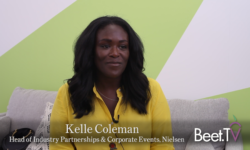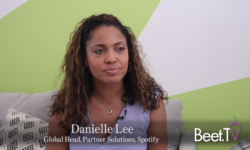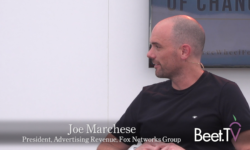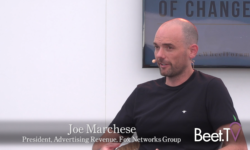CANNES – Creating better television ad experiences for viewers seems to be a never-ending conversation for agencies, brands and publishers. But judging from a panel at the Cannes International Festival of Creativity, ad relevance and personalization is expected to vary widely by platform and provider for the foreseeable future.
Reasons for the variations include corporate financial “short-termism,” thinking in narrow silos and measuring campaign performance in ways that aren’t always the most accurate or pertinent.
The panel by media agency Wavemaker was moderated by Joanna O’Connell, VP, Principal Analyst at Forrester Research. It brought together Peter Naylor, Hulu’s SVP of Advertising Sales, Twitter’s Managing Director of Media & Entertainment, Jennifer Prince, and Jacqueline Corbelli, the Founder, Chairman & CEO of BrightLine.
Citing Forrester research showing that not all consumers love or hate advertising, O’Connell posited, “My suspicion is that marketers don’t understand this at all.”
Hulu’s research has revealed “a spectrum of ad acceptance,” responded Naylor. “On one extreme end are people who are ad avoiders at all costs. The trap people fall into is that everybody avoids ads at all costs, and that’s just not true.”
According to Naylor, among those who sign up for Hulu on any given day, “The wide majority will take advertising.”
On Twitter, brand marketers “expect to hit consumers because eighty two percent of our users expect to see a message from a brand,” said Prince. Another thing she believes differentiates Twitter is that its advertising is “extremely native, it’s within the timeline and a tweet and so there’s not as much of a separation between ads and content, there is this blend.”
Given its “leaned-in, receptive audience,” Twitter does see marketers thinking a lot about consumers and the consumer journey, according to Prince.
Brightline has taken its cue from the desire of consumers to bring together their experiences with premium video and other content, said Corbelli. Giving credit to Hulu as an innovator, she explained that Brightline got involved “when we started noticing folks like Roku and streaming consoles like Sony PlayStation were vehicles for actually bringing these two things together.”
As for consumer ad tolerance, Corbelli believes “absolutely that viewers will not just tolerate but I think that in certain cases they’ll even embrace advertising. I think the personalization piece of this is really big. Things as simple as geo location and being able to personalize the dialogue a little bit.”
Again citing research, O’Connell pointed out how “highly variable” consumers are in their opinions of personalization. While some “super- progressive,” digital savvy people are “totally okay with personalization in exchange for something useful to them,” other super-progressives “are absolutely opposed to it.” O’Connell’s bottom line: Don’t assume we should always use technology in a certain way.
Naylor coined the term “short-termism” when asked about the barriers to widespread if not uniform adoption of approaches to advertising that do not repeat mistakes made early in the digital media world. “I think short-termism is a real problem when publicly traded companies have to lead ninety-day by ninety-day existences. When CMO’s are so nervous that they continually pout their accounts into review,” Naylor said.
Another symptom is “whatever you can measure you measure, irrespective of whether it’s the right thing to measure,” for example the “rush to last-click attribution and you lose sight of what drove the demand and you only give credit to the last click,” Naylor added.
Explaining Twitter’s approach to test-and-learn, Prince acknowledged that some features it’s rolled out have not been without controversy. “Like when we went from 140 characters to 280 characters and there were a few haters. Maybe more than a few. It has really done wonders for those who need more space to communicate.”
Corbelli pointed to the disparity among the top TV networks, each of which see things from their own, individual perspective and act accordingly. “They all are thinking about this directionally the same, but in terms of how they execute on it, pretty different. And they want to stay in charge of those decisions. So I think that for now, the experience in terms of personalization is going to vary depending on what content you’re watching, where and when.”














































